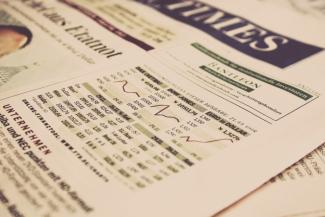
Reality Check, Rebalancing, and Expected Returns
This post was written by Ken Weingarten (609-620-1770)
From November of 2016 through January of 2018 we had 15 months of positive portfolio returns for nearly all client portfolios. The markets seemed to go up in a straight line. Then in February of this year we had our first negative month in quite some time. Since February, the stock market, has been on a roller coaster. But until the past couple of weeks, the Dow Jones has basically traded in a range between 24,000 and 27,000. Basically, the US stock market had been flat for the year.
For the past week or so it does seem that the market is going down by 1-2% per day. While each daily move is not all that significant, the sense of the market dropping does accumulate in one’s mind. It is the reality check that I refer to in the title of this past. But if we have a bit more perspective, one may not be truly all that concerned. Let’s rewind the clock to November 8, 2016. You will remember that was the date of the last presidential election. The Dow closed at 18,332 on that date. As it became clear who the winner of the election would be, the Dow Futures initially dropped about 900 points in the early morning hours of November 9, 2016. But, as the sun rose that morning, things turned around and the Dow finished higher by 256 points on November 9th. That was the beginning of an amazing 15-month run-up in the stock market.
Today the Dow Jones closed at 22,859 which is 4,527 points higher than the closing on election day in 2016. In a little over two years, that index is up nearly 20%. So, while some may find the recent downturn a bit disconcerting, I think it would be prudent to keep in mind exactly how much the market has gone up since that election day in 2016. Our rational brains do know that the market has its ups and downs, its’ risks and rewards. Clearly, we are experiencing the ‘risk’ part of the risk/reward investing equation. In my opinion and experience, this all seems quite normal.
Let me address rebalancing for a moment. As our clients know, when your risky assets fall in price, that is usually a good time to look at rebalancing your investment portfolio. What does this mean when the stock market is falling? Usually that means buying a little more of that asset that just lost some value. Rebalancing is an opportunity to buy something on sale. Let me provide an example.
I have a favorite brand of granola that usually sells for between $4.99-$5.99 per bag depending on the store I’m in. Sometimes I see it on sale for less than $4.99. What do I do when I notice a sale on my favorite granola? I buy more of it! It is something that I want to own. It is similar with stocks: if you already own stocks and the stock market is in a downturn your first reaction should be to think: maybe I should buy more now that it is on sale! Rebalancing is a disciplined approach to determining when you should be adding more stocks to your portfolio. If the market downturn has you more worried than anything, then maybe you should be outsourcing the worry to a financial advisor who can help you with a disciplined approach to your investment strategy.
Finally, let me discuss the concept of expected returns. Different financial professionals will have a different opinion as to ‘expected’ future stock market returns. It also depends on which stocks we’re are talking about: US Large Cap, Small Cap, International, Emerging Markets, etc. In general, let’s assume that most market participants ‘expect’ total stock market returns to be 8% in the future for their portfolio. Since most market participants are in the market ‘for the long-term’ let’s say this is an expected return over the next 10 years. Let’s assume that assumption was made when the market was nearing its’ high of 27,000 earlier this year. Now the market is just below 23,000. Has the ‘expected’ return changed? In fact, it has. The expected long-term market return is now higher. It is almost 2% higher than the when the market was at 27,000 and the expected return was 8%. Every day the market goes down, your future expected returns go up.
Hence, I would argue that buying stocks is more attractive now than it was when the market was hitting new highs. Of course, expected returns are NOT guaranteed returns so regardless of whether one expects 8% or 10% or any other return over the next 10 years, we are not guaranteed any return. It is also important to note that no one knows how long the current market downturn will last. Will the Dow sink below 20,000? It could. And if it does, will your future expected returns go even higher? Darn right they will.
In this post we have discussed the recent reality check the market is delivering along with the importance of rebalancing our portfolios and how to view future expected returns. I do hope by reading this you have learned something or feel just a tiny bit better about your portfolio!
(While I have noted that buying stocks now is more attractive than when the Dow was nearing its’ high for the year, nothing that I have written should be taken as specific investment advice. You should always speak with an investment professional before making any decisions regarding your portfolio.)

